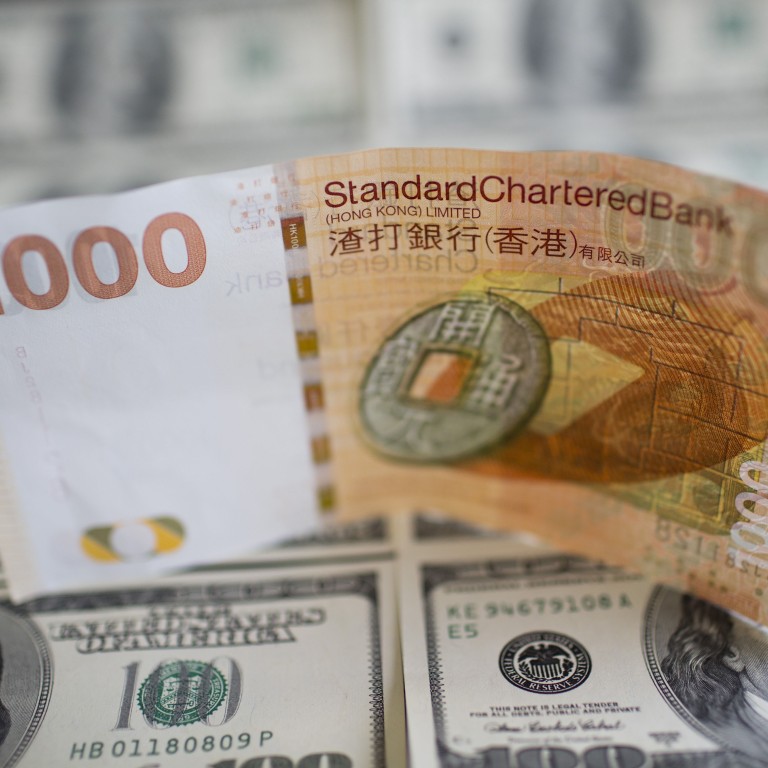
Our peg works and should be kept but it mightn't be
Future of mechanism uncertain if we hit difficult times and popular choice is for change
With the boss having decided to give this 30th anniversary some extra coverage, I may as well throw in my two cents' worth of recollections about the establishment of the peg.
One clear memory I still have of that week, when the Hong Kong dollar was plummeting ever faster on foreign exchange markets, was a report in this newspaper of some local punters rejoicing that the value of their local gold holdings in Hong Kong dollars per tael was rising so fast. They had stumbled on an excellent currency hedge. This place is a town of optimists, always.
The big appeal of the peg that John Greenwood devised was that it was such a simple mechanism.
The government would (in effect) print Hong Kong dollars out of thin air at HK$7.80 to US$1 for any bank that asked for the exchange. If that bank then wanted to sell its Hong Kong dollars again, it would get the same HK$7.80 rate and the government would tear up the Hong Kong dollars.
Follow what happens then.
Let's say all is booming and everyone wants Hong Kong dollars. The US dollars flow in and soon so many Hong Kong dollars have been printed that they are practically available on street corners.
The peg could easily be in place for a further 20 years … but it’s not guaranteed
In this surfeit of money, Hong Kong dollar interest rates plummet and soon people say, "Why should I take only 2 per cent in Hong Kong dollars when I can get 6 per cent in US dollars and the exchange rate is fixed." It's a good question and in answer they start to go back out of Hong Kong dollars into US dollars.
Now things go the other way. The Hong Kong dollars are torn up as the government takes them back in exchange for US dollars. Soon there is a shortage and interest rates climb. Soon people say, "Why should I take only 6 per cent in US dollars when I can get 10 per cent in Hong Kong dollars and the exchange rate is fixed?" Once again, there is an obvious answer and the money comes back to Hong Kong dollars.
This self-adjusting mechanism is called interest-rate arbitrage and it works beautifully provided that the country working it sticks by the rules - keep to one exchange rate, print the local currency out of thin air when people want it at that rate, burn it when they go the other way.
We had one big test of this currency board discipline in 1997-98 and we passed that test with an A-plus. Other Asian countries rigged their currencies with band-aid central bank interventions and one by one those currencies broke and crashed.
We took the pain of high interest rates demanded by peg discipline and the Hong Kong dollar sailed through at a constant HK$7.80.
But it was a mechanism for an older, simpler monetary system and we have had to revise it. How, for instance, is a more modern system with all its varied payment tools to balance its discipline on the thin point of cash transactions alone?
And so we now have an updated peg with a monetary authority, a real-time settlements system, a bank discount window and other tricks.
All very well and I don't question the need for them. My question is whether we still have that backbone of determination that served us so well in 1998. If the pressure really comes on again and people are screaming for relief, will Norman Chan at the monetary authority still say, "Sorry, folks, but stick with me and we should be okay in the end?"
The point is that this amended mechanism, just as the original one was, is not a fully automatic mechanism. Someone still has to operate it and insist that we stick with it when times are difficult and the overwhelming popular vote is for change.
So, I think John Greenwood is right and the peg could easily be in place for a further 20 years. In fact, I think it best for Hong Kong that it is.
But it's not guaranteed.

